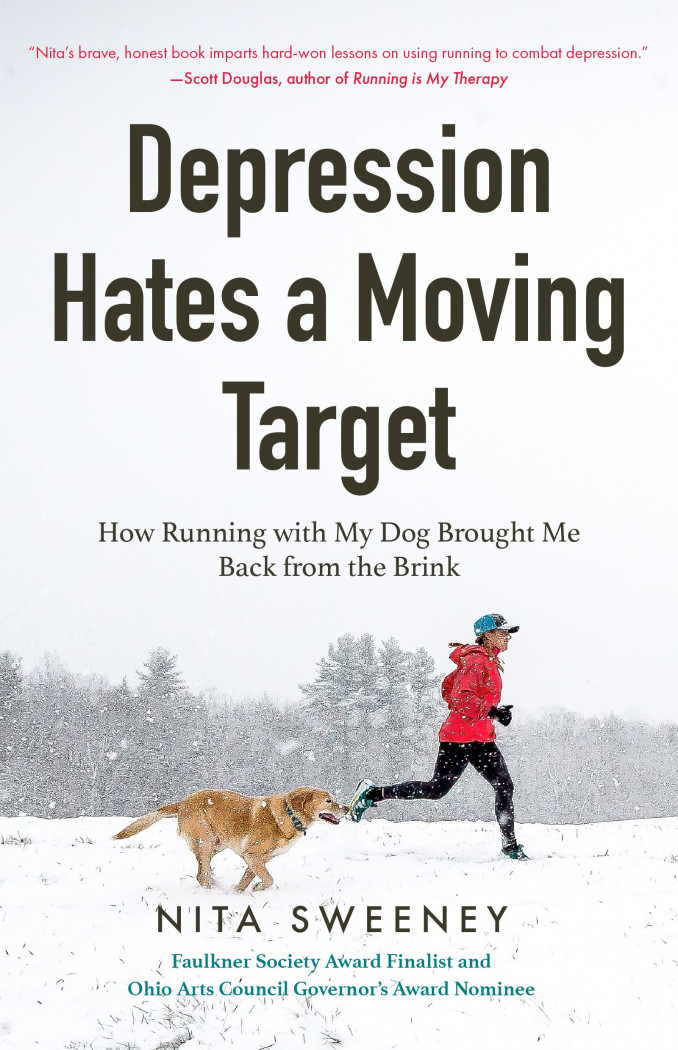It was by accident that Marian figured out walking could be more than just a mode of transportation or exercise. Years ago, she was going through a bad depressive episode after moving to a big city for school. “Instead of going to class, I would walk and walk and walk. At first I didn’t know why, but I realized that I was trying to make myself feel better,” she says.
Now she makes a point of walking outside for at least half an hour a day even in the fickle and sometimes gray weather of Washington State. For Marian, 52, who is diagnosed with bipolar II, her daily jaunts are a key part of managing her condition.
Marian isn’t the only one who has discovered the power of walking. Walking is one of the most popular forms of physical activity, according to the 2019 report Fitness in America: Behavior, Attitudes, and Trends from MINDBODY, a technology platform for the fitness, wellness, and beauty industries. Sixty-eight percent of Americans say walking is part of their regular exercise routine.
Research shows that walking is good for your physical health. It keeps your cardiovascular system humming, reduces stress, keeps your weight in check, and helps you sleep better. Taking your steps outside can also give you a boost if you’re stuck in a rut.
And for individuals with bipolar disorder, exercise—and walking in particular—can help balance moods and be an important part of an overall wellness plan.
“The trick with bipolar disorder is to consider what strategies people can employ themselves to enhance their overall treatment outcomes,” says Mary Fristad, PhD, professor and vice chair in the department of psychiatry and behavioral health at The Ohio State University Wexner Medical Center. “What matters is that people can take these strategies into their own hands to improve how they feel.”
Walking is one way to do that.
Good side effects
Walking is “free medicine with no bad side effects,” says Fristad, and it enhances other treatments like talk therapy and medication. “When you’re doing everything in your own power to maximize your treatment, I find that people can sometimes get by with a little less medicine and maybe the rest of treatment goes a little more smoothly.”
That was the case for Nita Sweeney, from Ohio. Previously, her medication would stop working every few years, sparking a depressive cycle and a need for new medication. Since she began walking and jogging consistently, she has been able to avoid cycling on and off medication, and hasn’t had to change her prescription in years. “I still have to take my meds and go to therapy, but overall, my mood is so much better,” she says.
For Nita and others, walking is one way to manage the side effects of medication-related weight gain. Plus, regular exercise promotes the body’s natural rhythms and improves sleep, which can be a challenge in today’s always-on lifestyle, especially for individuals with bipolar disorder.
“People are generally awake when the sun’s out and asleep in the dark,” says R. Scott Hamilton, MD, psychiatrist with OSF Behavioral Health in Illinois. For people with bipolar disorder, a pattern of staying up late and sleeping in can play havoc with stability or make symptoms worse.
Walking not only promotes longer sleep and better quality sleep, but it also provides structure during the day. Research in the Journal of the American Medical Association has found that sticking with regular daily routines like sleep and exercise reduced the likelihood of bipolar episodes.
A mood booster
When you’re feeling down, sometimes a walk around the block helps clear the mind. The fresh air and movement can be invigorating, particularly for those experiencing depression and bipolar disorder, says Hamilton.
Scientific evidence is mounting to support the mental health benefits of walking.
In a December 2018 study published in JAMA Psychiatry, researchers examined the relationship between activity, mood, energy, and sleep among individuals diagnosed with bipoloar I, bipolar II, and major depressive disorder as well as individuals with no mood disorders, who served as a control group. What they found was that, overall, individuals who were most active experienced better moods afterwards. In particular, among individuals diagnosed with bipolar I, those who were more active experienced greater energy and better moods compared to the control group. Other studies have found that physical activity may provide a buffer against depressive symptoms.
Marcia from New Mexico regularly walks as part of her daily commute, but her psychiatrist encouraged her to walk even more to help with her bipolar disorder.
She notices a difference in her mood when she walks. After spending time outdoors, she feels more energetic and motivated to do things around the house. “When I don’t walk, I start to get depressed,” says the 59-year-old. “It gets me outside. It helps me get my vitamin D, which my psychiatrist says helps with serotonin.”
While walking indoors has it benefits, taking your steps outside can have added benefits. Scientists from Stanford University found that strolling outside in nature quieted the part of the brain associated with rumination, those pesky repetitive, negative thoughts about the self that have been linked with a higher risk for depression and other mental health conditions.
More than just feeling the sunshine on your skin, strolling outside can expand your horizons too. “If you feel like your world is too small, you’re lonely, or you don’t see people, get outside and walk,” says Fristad, the clinical psychologist from The Ohio State University. “Chances are you are going to see someone else,” which can lead to a greater sense of connectedness.
Take 57-year-old Nita, for example, who joined a walk/run group. “Sometimes it’s just one other person, sometimes it’s 25 or 30 people. We check in on each other,” she says. “I know I have this group every Saturday.”
But walking doesn’t help with just depression. It can help with manic episodes too. “If you have a lot of energy, think about what helps calm your mood,” says Fristad. “Doing something like walking isn’t dangerous and won’t get you in trouble. You walk and burn off energy.”
Regular walks near his California home helps Jeffrey, 52, manage his bipolar symptoms and stabilize his mood.
“When I feel manic symptoms, I’m usually irritated, agitated, and incredibly tense,” he says. “After a slow walk, the symptoms start to disappear or they go way down. It helps almost as much as taking an antipsychotic.” When Jeffrey feels depressed, a few loops around the park improves his mood significantly.
Moving mediation
Rhonda started exercising to alleviate stress. Unlike the boot camp classes she tried, where the quick tempo didn’t allow her mind to settle, the consistent pace of walking gives her the time and space to reflect.
“With bipolar, you can be snappy with people,” says the 49-year-old from North Carolina. “When I walk, I get to reflect on what happened during the day and how I handled things. I notice any triggers and what I need to do to counteract those triggers.” Her therapist encourages her to be proactive about her care, too. Rhonda typically walks for 30 minutes on her home treadmill at the end of the day. “It’s an outlet for my energy and makes me feel better,” she says. “It gives me a sense of accomplishment.”
Hamilton says there’s some data to suggest that meditative and rhythmic exercises like walking, running, and swimming can help stabilize mood to a certain extent. He also champions exercise for its stress-busting powers.
“Exercise increases the production of BDNF (brain-derived neurotrophic factor) in the brain, which helps the brain regulate stress,” says Hamilton. “It helps you adapt to stress in positive ways, which is good.”
How to get started
Experts say getting out the door and taking the first step is the goal. They recognize that this is especially difficult when you’re experiencing depression and everything feels overwhelming.
“At the end of the day, the average person would like to be a couch potato, says Fristad. “If your default mode is that you don’t have energy or motivation or don’t find pleasure in activities, it’s hard to get out the door.”
“When I’m in a depressive cycle, the last thing I want to do when I wake up on a weekend morning is go run or walk,” says Nita. Having a group and structure with her regular weekend meet-ups helps keep her on track.
“Sometimes it’s still hard to get motivated, but I know it’s going to make me feel better,” she says.
Marian from Washington State also explains that while it can be a challenge to get out the door, when she does take her steps, it gives her a sense of accomplishment. “Even if I’m having a really bad day, I know I’ve accomplished at least one thing,” she says.
Fristad echoes that sentiment. “Don’t base your decision on how you feel before you do the thing, but evaluate how you feel after you’ve done it,” she says. Rather than fretting over a million reasons not to go for a walk, Fristad recommends what she calls the “Nike therapy”—just do it.
That philosophy is how Jeffrey maintains his walking routine. “Even when I don’t feel like walking, I get up and do it regardless,” he says. “I always think about what I’m going to get from [walking] and that pushes me forward.”
“Start somewhere. If 30 minutes sounds impossible, tell yourself to go for a five-minute walk,” says Fristad. “If that is too much, walk for one minute. Maybe you’ll go outside and decide to walk for five or 10 minutes instead.” You don’t have to walk for hours or even at a fast pace in order to experience a boost from walking.
“I believe in the healing power of movement. It’s improved my mood and my outlook on life is better,” says Nita. “It really has changed my life.”
* * * * *
How to take the first step
Just 5 minutes
Getting out the door can be the hardest part. Whether it’s five minutes or just a walk around the block, start small.
Set a timer
On days when Marian doesn’t feel like walking, she sets the timer on her phone for 15 minutes. “I walk in one direction. If I feel really bad, I can just walk 15 minutes and then turn around. Sometimes I keep going,” she says. Choose an amount of time that feels manageable and walk until your alarm chimes.
Walk with a pal
Make a date with a walking buddy who can support your walking habit. Not only can it give you an extra nudge to get out the door, but it’s also an opportunity to feel connected and interact in person rather than behind screens. Dogs also make great walking companions!
Make It Routine
“I get up, drink my coffee, and then walk,” says Marcia. “It’s my routine and that makes it easier to stick with.” Pencil your walk onto your calendar like any other appointment.
Support Your Feet
Stick with sneakers or other athletic shoes with plenty of room in the toe box. Not only will they support your feet, but they’ll also make your walk more enjoyable.
Printed as “Walk to a Better Mood,” Spring 2019


